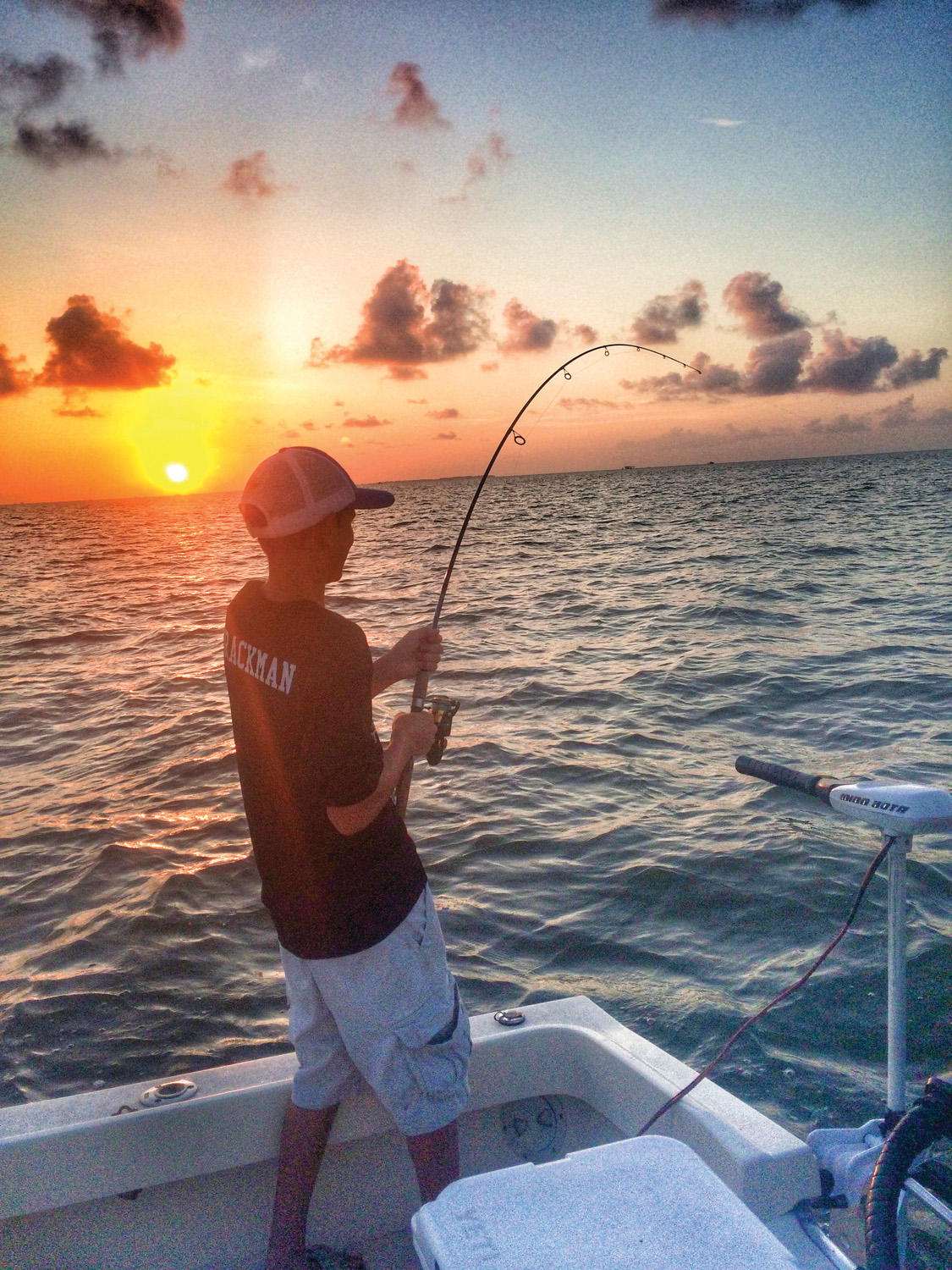The Buzz: May 2017

The Galveston Bay complex seems to be headed for a fairly normal year – first time in a while. Most everyone thinks about the flooding the past two years but it’s actually been abnormal for the past seven. Five years of drought preceded consecutive years of extreme fresh water inundation, certainly enough of a puzzle to keep our heads on a swivel. With that being said, this article is being written a little more than two weeks earlier than you are likely to read it – so forgive me if we pop another flood during April’s famed showers.
IF, the bay keeps up the way things are presently headed, we will finally see normal salinity and a long-awaited rebuilding year in our estuary. Everyone knows that the last two years were very detrimental during the flooding and the freshwater stack-ups that occurred when untold thousands of trout took up residence on East Bay’s reefs. Fisherman by the hundreds gathered on those reefs and pounded the fish that were corralled up, escaping all the freshwater that was gushing down the Trinity River. The moment the rivers started to subside and the salinity tried to creep back up, the fish then got hammered by the croaker men on the Ship Channel as they slowly followed the salinity back toward Trinity Bay. It was a free-for-all of catching all along the Channel, at Smith Point and the Exxon A Lease wells. The summer of 2016 was a full replay of 2015.
We all remember the flooding but are quick to forget the drought. Sure, we forget, we were content catching big fish daily in the back of Trinity, back of East Bay, and far up the Houston Ship Channel. But the drought was equally as injurious for our bay system, stunting the reproduction cycle and diminishing the quality of a lot of our habitat.
During the drought years the salinity was 30-35 parts per thousand at the mouth of the Trinity River. Trout, shrimp and every other kind of larva and fry in the food chain need lower salinity to thrive. The river flows were so weak during those times that the tides pushed saltwater so far up the rivers and bayous that it all but wiped out the reproduction cycles. The further you go up the rivers, the more the habitat for these animals diminishes – no sea grass, no brackish marsh, only raw clay banks. Not including the saltwater stack-up situation, where we hammered fish and brought back quick limits daily, our habitat struggled and reproduction did as well.
With all of that being said, we still do have fish. Even after days of poor fishing success during March and April, we have to remember it’s the spring transition and it’s always tougher this time of year. It’s not easy to gauge a fishery through fishing success when fish are moving and not eating every day.
As May approaches the water temperature will rise and forage becomes more plentiful – glass minnows, mullet, shad and shrimp bunch together in their migrations and game fish school more tightly following them. Fish metabolism also increases, which means more frequent feeding. The more they eat, the more they’ll slick and make our job easier. We will learn a lot more about the state of our fishery in May.
East Galveston Bay
Trout should be thick on oyster reefs in the middle of East Galveston Bay. Drifting with MirrOlure soft plastic lures is a great approach as you can play the full water column to find them. Redfish will inhabit the marshes and take MirrOlure Marsh Minnows and topwaters.
Trinity Bay
Trinity has been very inconsistent due to the scarcity of resident trout. With perfect conditions a few wade fishermen are catching some on the east shoreline with 51MR MirrOlures and topwaters. Redfish are in Jack’s Pocket and the North Ridge.
West Galveston Bay
West Bay has been giving up decent catches for waders along the south shoreline from Snake Island Cove to Bird Island. Warmer water temps will bring more consistent action behind San Luis Pass. Wade the sand flats with topwaters early and then switch to MirrOlure Provoker plastics. Drifting is a good way to cover water on the flats. Hop out and wade wherever bait or slicks are prevalent. Redfish can be found in the Greens Lake and Carancahua Lake area. Set up on the mouths of these lakes or along adjacent points.
Please be courteous on the water. Fishing in May can get crowded and a little hectic at times, make sure to keep a respectful distance from other fisherman and don’t run your big motor over areas other boats are drifting.

